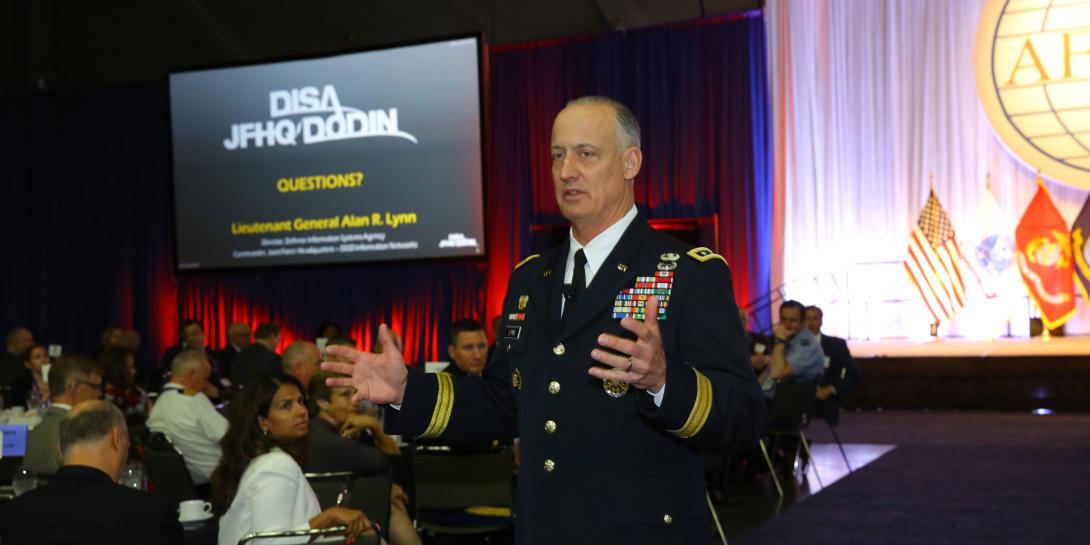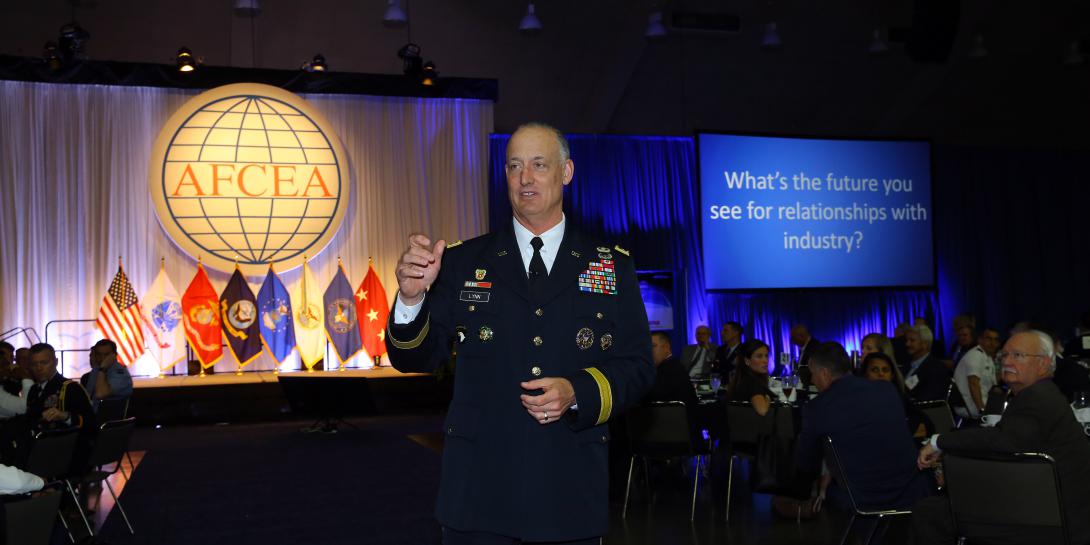Speed or Security? DOD Needs Both
The future for the U.S. Defense Department is coming at the speed of light—literally. Securing it presents many challenges.
How many software engineers does it take to screw in a light bulb? None. It’s a hardware problem. That joke, though, soon might be on its way to becoming wrong with the speed of technology, joked Lt. Gen. Alan Lynn, USA, director of the Defense Information Systems Agency (DISA) and commander of the Joint Force Headquarters–Department of Defense Information Networks (DODIN).
“There’s something called LiFi out there,” Gen. Lynn said Tuesday, kicking off the inaugural day of AFCEA International’s three-day Defensive Cyber Operations Symposium, or DCOS. “It’s light-emitting diodes that is going to be the equivalent of WiFi. So there might be software in light bulbs now.”
'Our future is mapped together," @USDISA Gen. Lynn to industry. 'W/o you we couldn’t do the warfighting we do today' #AFCEACyber
— Sandra Jontz (@jontz_signalmag) June 13, 2017
The future is coming at society at, well, that speed of light. Security in the future will be defined, in part, by a secure Internet of Things, for example, Gen. Lynn said, noting that a lot rides on the blossoming ecosystem that will influence just about every part of society. Technology must address two needs: security and speed. Devices must be able to perform change in real-time, he said. No one wants a self-driving car that has a delayed reaction to emergency braking, he noted. Critical to what the Defense Department seeks, both in-house as well as from industry, is bold innovation that delivers security, Gen. Lynn said. The way the Internet was built, for example, means people can ride on it and no one knows who they are. That must change.
The future is going to be #IoT, Gen. Lynn says, with a change toward real-time computing. #AFCEACyber
— Sandra Jontz (@jontz_signalmag) June 13, 2017
Mobile devices today are not secure enough to be used in sensitive Defense Department locations; Gen. Lynn says he wants to “flip that on its ear.” He envisions a future where tablets, smartphones and laptops all can be used securely in all locations. Ecosystems needing enhancements including derived credentials, biometrics, patterns of life technologies and assured identity platforms.
.@USDISA looking for virtualized network technology, like frequency hopping radios - #AFCEACyber
— Sandra Jontz (@jontz_signalmag) June 13, 2017
Gen. Lynn shared with attendees a succinct list of near-term needs that includes software-defined networking, identity algorithms, large data analytics, business analytics, high bandwidth light and laser capabilities.
He also highlighted a few key contracts rolling out this year that tally in the billions of dollars for the industrial base. Leading the pact is DISA's plans for its MilCloud 2.0 venture, a $498 million contract into a military cloud system designed to be more secure than commercial cloud, Gen. Lynn said.
key contracts coming out of @USDISA--MilCloud 2.0 for $498M; SETI for $7.5 billion and Encore 3 IT services $17.5 billion #AFCEACyber
— Sandra Jontz (@jontz_signalmag) June 13, 2017
Next up is the Systems Engineering Technology Innovation (SETI) contracts for IT systems support worth an estimated $7.5 billion. “We need really technical expertise. We want to innovate, we want to have those kind of people on contract, ready to go,” Gen. Lynn said. SETI dovetails critical engineering expertise with research, design, development, implementation, integration and optimization of Defense Department information technology capabilities, systems and solutions. DISA also is getting ready for Encore III, a $17.5 billion contract to upgrade to the agency’s IT services efforts.







Comments